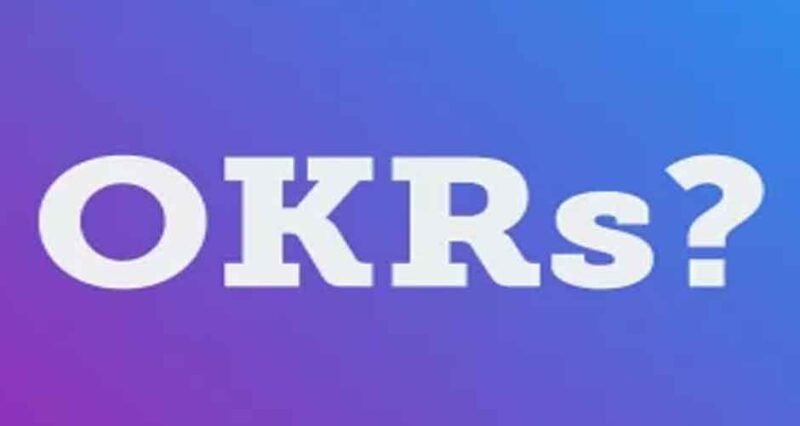
In today’s relentlessly competitive business landscape, where innovation and adaptability are paramount, companies seek strategies and tools to give them a substantial edge.
The business world is replete with management methodologies and frameworks, but only some have garnered as much attention and success in recent years as Objectives and Key Results. The growing popularity of OKR raises a crucial question: could this methodology be the elusive missing link in your company’s pursuit of success?
Understanding OKRs
Before delving into the compelling reasons behind OKRs’ effectiveness, let’s clearly understand what OKRs entail. OKRs are an acronym for Objectives and Key Results, a goal-setting framework that has earned its stripes for helping organizations define, measure, and track objectives and their corresponding outcomes. Obtaining an OKR Certification can further validate one’s understanding and proficiency in implementing this impactful goal-setting framework.
Originating from Intel in the 1970s and subsequently popularized by tech giants like Google, OKRs have proven instrumental in aligning teams and motivating them to accomplish ambitious goals.
Clarity and Alignment
OKRs offer a remarkable benefit in the form of clarity and alignment. In a company using OKRs, each department, team, and individual knows precisely what they’re working towards and how their contributions dovetail with the broader company objectives.This crystal-clear alignment ensures that every organization member moves in the same direction, dramatically reducing the likelihood of resources being squandered on non-essential tasks or conflicting priorities.
Ambition and Stretch Goals
OKRs encourage teams to dream big. The “objective” in OKRs often embodies a bold and audacious goal that might initially appear nearly unattainable. Setting these lofty targets pushes teams out of their comfort zones and inspires them to think innovatively.Even if they fall short of achieving 100% of the objective, reaching 70% of a stretch objective can often yield more substantial results than attaining 100% of a conservative one.
Continuous Feedback Loop
Unlike the traditional annual performance review process, OKRs operate on a more frequent feedback loop, typically quarterly. This frequency enables teams to adapt, recalibrate, and pivot as necessary, ensuring that they consistently move in the right direction.Additionally, it allows for the timely identification and resolution of issues or roadblocks, preventing them from escalating into more significant challenges.
Employee Engagement and Ownership
When employees grasp the bigger picture and see how their efforts directly contribute to the company’s success, levels of engagement soar. OKRs foster a sense of ownership as every individual or team is tasked with achieving their key results. This direct accountability nurtures a more profound understanding of purpose and commitment to the tasks.
Transparency and Trust
OKRs promote a culture of transparency. Since objectives and results are often shared throughout the organization, everyone knows what’s happening in different departments.
This open communication fosters trust and dismantles silos, creating a more collaborative work environment where cross-functional teams can collaborate more effectively to achieve company-wide goals.
Potential Pitfalls of OKRs
While the advantages of OKRs are substantial, it’s crucial to be aware of potential pitfalls to ensure that you maximize the framework’s effectiveness within your organization:
Overemphasis on OKRs
While OKRs are undeniably valuable, they should not overshadow other aspects of your business. Some critical aspects of business success cannot be quantified or captured within the OKR framework. Striking a balance between OKRs and other essential elements is crucial to maintaining a holistic view of your organization’s progress.
Setting Unrealistic Objectives
Ambitious goals are commendable but should remain within the realm of possibility. Setting consistently unattainable objectives can demoralize teams, erode morale, and potentially lead to burnout. Objectives should be ambitious yet achievable.
Rigidity
The business landscape is ever-evolving, and sometimes objectives may need to change mid-course to adapt to unforeseen circumstances or market shifts. Maintaining flexibility within the OKR framework is paramount to effectively respond to change and maintain your organization’s competitive edge.
Final Thoughts
It is evident that OKRs possess the potential to be a transformative force for many companies. They provide a clear sense of direction, foster high levels of alignment and engagement, and instill a culture of transparency and accountability. As with any tool, the key lies in properly implementing and adapting to a company’s unique needs and challenges.
If your company has been grappling with alignment, motivation, or achieving significant goals, consider integrating OKRs into your organizational framework. OKRs could be the missing link that propels your organization to the next level of success in this fiercely competitive business landscape.

